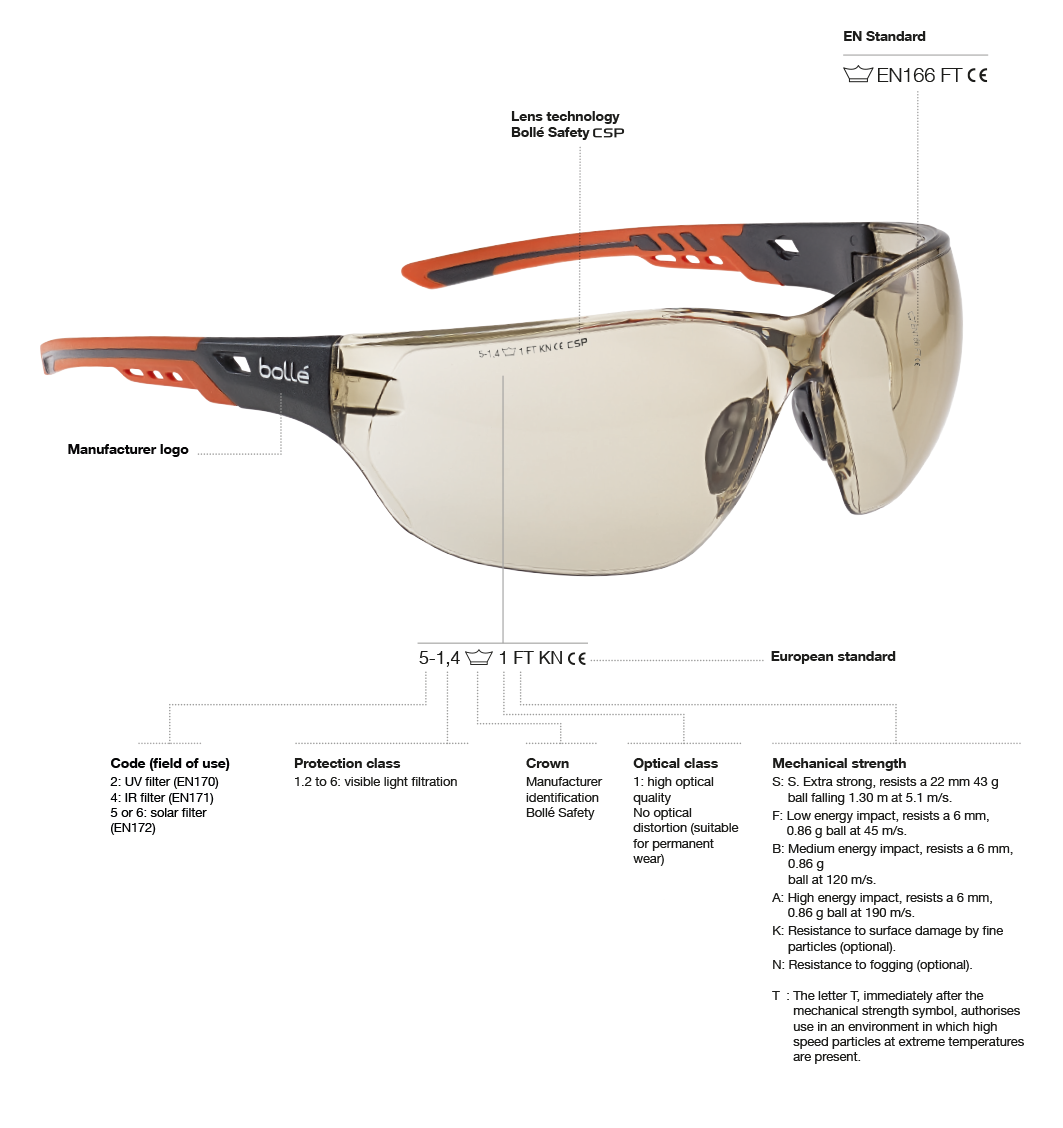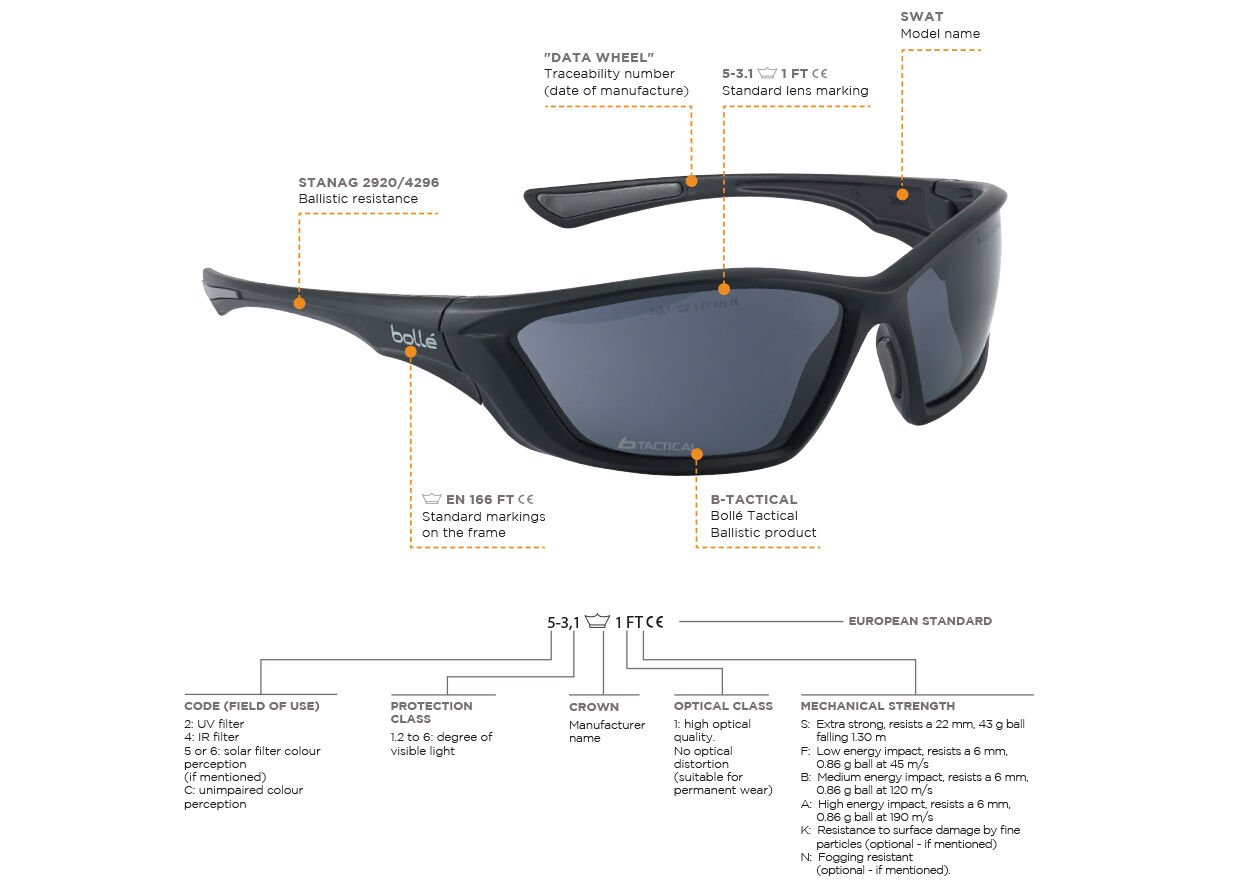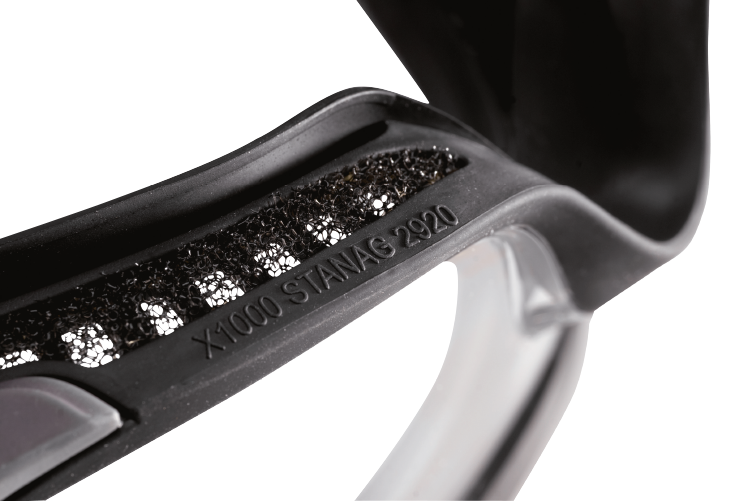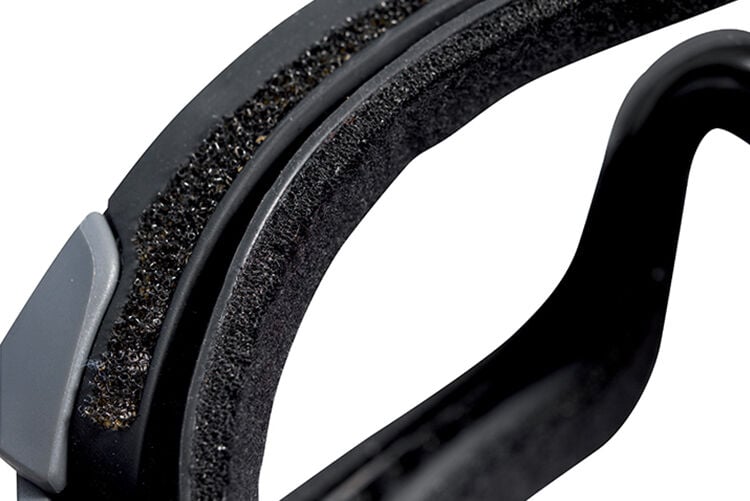SAFETY AND TACTICAL MARKINGS
SAFETY
Products tested and certified
Bollé Safety designs and markets personal protective equipment for eye protection for industrial use consistent with the Directive 2016/425, and to the harmonized standard EN 166:2001.
Each Bollé Safety product is tested and certified by independent laboratories (Certottica, INSPEC, Vincotte, etc..) According to European standards.

BASIC STANDARDS
EN 166 Specifications
EN 167 Optical test methods
EN 168 Test method other than optical
STANDARDS BY USE
EN 169 Welding filters
EN 170 Ultraviolet filters
EN 171 Infrared filters
EN 172 Solar protection filters for industrial use
EN 175 Welding work equipment
EN 207 Glasses for laser protection
EN 208 Glasses for laser adjustment
EN 379 Specification concerning welding filters
Bollé Safety product approval certificates to CE standards will be sent on request.
FRAME MARKING
Frame marking must include the CE Symbol and manufacturer's name (logo or brand). If the glasses refer to the EN standard, the EN standard number is mandatory together with the various use and mechanical strength symbols, in accordance with the tests requested by the manufacturer.
Use symbols:
3. Liquid droplets or splashes.
4. Large dust particles > 5 microns.
5. Gas and fine dust particles < 5 microns.
8. Electrical short circuit arc.
9. Molten metal and hot solids.
Mechanical strength symbols:
S. Extra strong, resists a 22 mm, 43 g ball falling 1.30 m.
F. Low energy impact, resists a 6 mm, 0.86 g ball at 45 m/s.
B. Medium energy impact, resists a 6 mm, 0.86 g ball at 120 m/s.
A. High energy impact, resists a 6 mm, 0.86 g ball at 190 m/s.
LENS MARKING
Lens marking must include:
the scale number for filtering lenses. the manufacturer's name (logo or brand recommended by the manufacturer).
Optical class symbols:
1. Continuous work
2. Intermittent work
3. Occasional work, but must not be worn continuously.
Use symbols:
9. Molten metal and hot solids.
Mechanical strength symbols:
S. Extra strong, resists a 22 mm 43 g ball falling 1.30 m at 5,1 m/s
F. Low energy impact, resists a 6 mm, 0.86 g ball at 45 m/s
B. Medium energy impact, resists a 6 mm, 0.86 g ball
at 120 m/s
A. High energy impact, resists a 6 mm, 0.86 g ball at 190 m/s
K. Resistance to surface damage by fine particles (optional)
N. Resistance to fogging (optional)
T. The letter T, immediately after the mechanical strength symbol, authorises use for high speed particles at extreme temperatures.
WARNING
F. Maximum protection for glasses.
B. Maximum protection for goggles.
A. Maximum protection for face shields.
If the S, F, B and A symbols do not apply to both the lens and frame, then the lowest level must be assigned to the protective eyewear.
UKCA
The UKCA (UK Conformity Assessed) marking is a new marking used for goods sold on the market in Great Britain (England, Wales and Scotland). It covers most goods which previously required the CE marking.
Bollé Safety’s environmental commitment:
Bollé Safety is committed to offering an alternative "environmentally responsible" option that is in tune with the needs of its customers.
In recent years, Bollé Safety now distributes its products in individual recyclable bags.
From manufacturing to logistics
All Bollé Safety products are subject to regulation REACH (Registration, Evaluation and Authorization of Chemicals), which ensures that all substances used on Bollé Safety products do not harm health or the environment.
TACTICAL
Products tested and certified
Bollé Safety Standard Issue designs and markets personal protective equipment for eye protection for industrial use consistent with the European Regulation 2016/425, and to the harmonized standard EN 166:2001.
Each Bollé Safety Standard Issue product is tested and certified by independent laboratories (Banc Officiel d'Epreuve Saint-Etienne, BSI, INSPEC, Certtotica etc..) According to European & Global standards.


STANAG 2920 & 4296
STANAG 2920
This standard concerns bulletproof materials and combat clothing. In the case of Bollé Safety Standard Issue, goggles and glasses are subjected to impact tests using projectiles simulating ballistic fragments.
All the tests allow to calculate a V50 corresponding to the speed at which the projectile has a 50% chance to perforate the material. The value of the V50 varies according to the nature of the materials and therefore the colour of the lenses.
STANAG 4296
The STANAG 4296 marking guarantees the ballistic resistance defined by STANAG 2920 but also incorporates certain use criteria (comfort, fog reduction, scratch resistance, etc.) and criteria relating to the general appearance (brightness, compatibility with other equipment, etc.).
MIL-PRF
MIL is an evolving American military standard: Mil - PRF - 31013 (1996) and Mil 43511D (2006) were replaced by GL-PD-10-12 (2010), which will then be revised and transformed into MIL-PRF-32432 in 2013.
These military standards specify criteria with which products must comply in terms of eye protection. These criteria concern in particular ballistic protection, optical qualities, product durability, etc.
The MIL standard which is used as a reference standard by many countries.
